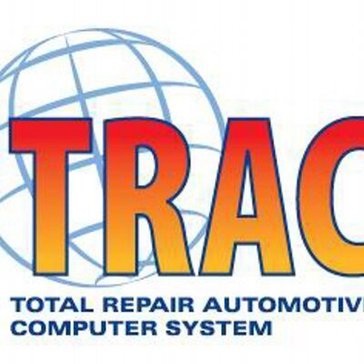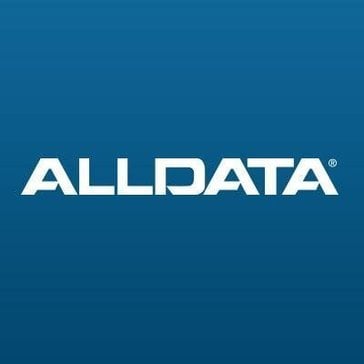Description

NAPA TRACS

Orderry
Comprehensive Overview: NAPA TRACS vs Orderry
NAPA TRACS and Orderry are both software solutions primarily targeting businesses in the automotive industry. Here’s a detailed overview of each, including their primary functions, target markets, market share, and key differentiating factors:
NAPA TRACS
a) Primary Functions and Target Markets
- Primary Functions: NAPA TRACS (Total Repair Auto Care System) is a comprehensive shop management software designed to streamline operations in auto repair shops. Key features include appointment scheduling, repair order management, parts inventory management, customer relationship management (CRM), estimating and invoicing, integrated accounting, and reporting tools. It also integrates with NAPA’s parts catalog, enabling easy ordering and inventory management.
- Target Market: The primary target market for NAPA TRACS consists of small to medium-sized auto repair shops and automotive service providers that require robust, integrated solutions to manage their operations more efficiently.
b) Market Share and User Base
- Market Share: NAPA TRACS is popular among independent repair shops, particularly those who are already affiliated with or frequently use NAPA’s extensive parts distribution network. Its close ties with NAPA add to its appeal in the U.S. market.
- User Base: The user base predominantly consists of auto repair shops and service centers that prioritize seamless integration with parts suppliers for operational efficiency.
c) Key Differentiating Factors
- Integration with NAPA Network: One of the standout features is the deep integration with NAPA Auto Parts, which streamlines parts ordering and inventory management directly within the system.
- Brand Affiliation: Shops already sourcing parts from NAPA are more inclined to use a system that offers direct integration, potentially reducing operational complexities and turnaround times.
Orderry
a) Primary Functions and Target Markets
- Primary Functions: Orderry is a cloud-based business management software designed for service-centric businesses, including auto repair shops. It offers features such as job scheduling, inventory management, CRM, employee management, financial reporting, and customer communication tools. Orderry emphasizes workflow automation and operational optimization.
- Target Market: While Orderry targets auto repair shops, it also appeals to a broader range of service-oriented businesses such as electronics repair shops, service centers, and other repair-based companies looking to modernize and streamline their operations.
b) Market Share and User Base
- Market Share: Orderry caters to a diverse range of service industries and thus has a more varied market presence compared to NAPA TRACS. Its market share is growing, particularly among businesses seeking cloud-based solutions.
- User Base: The user base is diverse, extending beyond just automotive repair shops to include various service providers who need flexible and scalable management solutions.
c) Key Differentiating Factors
- Versatility and Flexibility: Orderry offers broader applicability across various service industries, not just automotive, making it a versatile option for businesses in multiple domains.
- Cloud-Based Accessibility: As a cloud-based solution, Orderry offers greater flexibility in terms of access from multiple devices and locations, appealing to businesses that prioritize remote management capabilities and real-time data access.
- Customization and Scalability: Orderry frequently highlights its ability to be customized and scaled according to the specific needs of different service businesses, making it attractive to a wider range of users beyond the automotive sector.
Comparative Analysis
- Integration vs. Flexibility: NAPA TRACS provides specialized integration with NAPA’s vast network, which is a significant advantage for businesses heavily reliant on NAPA parts. In contrast, Orderry’s cloud-based platform offers more general flexibility across various service industries.
- Targeted vs. Broad Market: NAPA TRACS’s strength lies within automotive services directly linked to NAPA’s supply chain, whereas Orderry’s adaptability extends its usability to a diverse set of service industries, allowing it to capture a broader market.
- User Experience and Accessibility: Users looking for specific integration with NAPA will find NAPA TRACS more beneficial. On the other hand, users seeking scalable, customizable, and easily accessible solutions may prefer Orderry.
In conclusion, choosing between NAPA TRACS and Orderry largely depends on the specific needs of the business, whether they prioritize integration with parts suppliers or require a flexible solution suitable for diverse service operations.
Contact Info

Year founded :
1989
+1 800-659-3710
Not Available
United States
http://www.linkedin.com/company/officialnapatracs

Year founded :
Not Available
Not Available
Not Available
Not Available
Not Available
Feature Similarity Breakdown: NAPA TRACS, Orderry
As of my knowledge cutoff date in October 2023, both NAPA TRACS and Orderry offer software solutions aimed at helping automotive repair shops manage their operations. Let’s break down the feature similarities and differences between them:
a) Core Features in Common:
-
Work Order Management:
- Both NAPA TRACS and Orderry provide tools to create, manage, and track work orders. This includes setting up repair jobs, assigning tasks to technicians, and tracking the status and progress of work orders.
-
Inventory Management:
- Both platforms offer inventory management features that include tracking parts and supplies, managing stock levels, and reordering parts as necessary.
-
Customer Management:
- Both software solutions have customer relationship management (CRM) capabilities. They store customer details, maintain history of interactions, and manage appointments and upcoming services.
-
Invoicing and Billing:
- Both systems allow shops to generate invoices, manage billing, and process payments. They support various payment methods and include tax configurations.
-
Reporting and Analytics:
- Each platform provides reporting tools that offer insights into sales, operations, customer activity, and inventory. Users can access reports to drive decision-making and optimize business operations.
b) User Interface Comparison:
-
NAPA TRACS:
- The user interface of NAPA TRACS is designed to be comprehensive with deep integration into other NAPA services. It provides a detailed workflow for managing shop operations, with a straightforward navigation designed for busy shop environments. The color scheme and design tend to focus on high visibility, with clear distinctions between different modules and functions.
-
Orderry:
- Orderry tends to emphasize a more modern, sleek design with an intuitive layout aiming for ease of use. The UI is user-friendly and is geared towards reducing the learning curve for new users. It focuses on efficiency by providing a dashboard that offers a quick overview of shop activities, upcoming tasks, and key performance indicators.
c) Unique Features:
-
NAPA TRACS Unique Features:
- Integration with NAPA Parts Catalog: NAPA TRACS offers robust integration with the NAPA parts catalog, providing seamless access to parts ordering and availability directly from the repair orders.
- NAPA Benefits: Being part of the NAPA ecosystem, NAPA TRACS users might have access to special pricing, promotions, and NAPA-specific support and training resources.
-
Orderry Unique Features:
- Employee Performance Tracking: Orderry includes detailed features for tracking employee performance, providing insights into productivity, efficiency, and job completion rates.
- Cloud-Based Solution: Orderry is fully cloud-based, offering flexibility in accessing the system from various devices and locations, enhancing mobility and remote management capabilities.
- Customizable Notifications and Alerts: Orderry offers customizable alerts and notifications that help shops stay ahead of deadlines, inventory needs, or customer appointments without constant manual checking.
Each software aims to address the needs of automotive repair shops but offers distinct advantages depending on integrations, specific needs like cloud accessibility, or employee management tools. Choosing the right solution often depends on the specific operational requirements and preferences of the shop.
Features

Customer Management
Inventory Management
Reporting and Analytics
Invoicing and Payment
Integration Capabilities

Sales Management
Financial Management
Inventory Management
Employee Management
Customer Management
Best Fit Use Cases: NAPA TRACS, Orderry
NAPA TRACS and Orderry are both software solutions designed to cater to the needs of different types of businesses, particularly in the automotive and service industries. Here’s how they compare in terms of best-fit use cases, ideal business types, and scenarios:
NAPA TRACS
a) For what types of businesses or projects is NAPA TRACS the best choice?
NAPA TRACS is primarily targeted towards automotive repair shops and businesses that require comprehensive management of auto parts and services. This software is ideally suited for:
-
Auto Repair Shops: These can range from small independent garages to larger multi-location operations. NAPA TRACS offers features like customer management, service writing, labor tracking, and parts inventory integration tailored for the automotive industry.
-
Fleet Maintenance Operations: Companies managing a fleet of vehicles can benefit from its capabilities of tracking service history, scheduling maintenance, and managing parts inventory.
-
Parts Retailers: With its tight integration with NAPA parts inventory, this software is beneficial for businesses that sell or distribute automotive parts.
d) Industry verticals and company sizes catered by NAPA TRACS:
NAPA TRACS excels in catering to the automotive industry. It is particularly well-suited for small to mid-sized businesses but can also scale to support larger operations that need robust inventory and order management solutions. The software is very industry-specific, focusing on scenarios that require seamless parts integration and service management.
Orderry
b) In what scenarios would Orderry be the preferred option?
Orderry is a versatile software solution designed to manage various service-based businesses. It is ideal for:
-
Repair Service Businesses: Including electronics repair shops, computer service centers, and mobile repair companies. Orderry is beneficial in managing work orders, customer communications, and inventory tracking.
-
Small to Medium-sized Enterprises (SMEs): Particularly those that need a simple yet comprehensive system to handle customer relations, inventory, and workflows across different service types.
-
Trade Services Providers: Businesses involved in HVAC repair, plumbing, electrical services, or appliance repair can use Orderry to manage their operations efficiently.
d) Industry verticals and company sizes catered by Orderry:
Orderry is versatile and not limited to a single industry, which makes it suitable for a wide range of service-oriented businesses. It caters primarily to small and medium-sized businesses due to its user-friendly interface and comprehensive set of tools. Its flexibility allows it to fit businesses outside of the automotive industry that still require robust service management capabilities.
In summary, NAPA TRACS is best suited for automotive-focused businesses, offering industry-specific features for repair shops and parts retailers. On the other hand, Orderry is ideal for various service-oriented businesses needing efficient management of repairs and customer interactions, with the flexibility to adjust to different industries and business sizes.
Pricing

Pricing Not Available

Pricing Not Available
Metrics History
Metrics History
Comparing teamSize across companies
Conclusion & Final Verdict: NAPA TRACS vs Orderry
To provide a conclusion and final verdict for NAPA TRACS and Orderry, it's essential to assess the overall value, pros and cons of each product, and offer recommendations for potential users.
Conclusion and Final Verdict
a) Considering all factors, which product offers the best overall value?
When assessing the best overall value between NAPA TRACS and Orderry, it's important to consider factors such as ease of use, feature set, support, integration capabilities, pricing, and specific business needs.
-
NAPA TRACS is highly valuable for auto service businesses that already use or plan to use NAPA's parts and services, benefiting from seamless integration and additional support from NAPA. It stands out in environments where using NAPA’s suite of products and services results in operational synergies.
-
Orderry, on the other hand, provides robust overall value for small to medium-sized businesses that require extensive inventory and workflow management capabilities, not limited to, but including auto repair.
Thus, the best value depends on specific business contexts. If an automotive service center extensively relies on NAPA parts and benefits from those integrations, NAPA TRACS may offer superior value. If the business is looking for broader inventory management capabilities across various sectors, Orderry could provide better value.
b) What are the pros and cons of choosing each of these products?
NAPA TRACS:
-
Pros:
- Seamless integration with NAPA’s ecosystem of parts and services.
- Offers specific tools tailored for the automotive repair industry.
- Access to NAPA’s training and support resources.
- Enhances efficiency for businesses already using NAPA resources.
-
Cons:
- Might offer limited utility for businesses not aligned with NAPA’s product ecosystem.
- Could have a steeper learning curve for users unfamiliar with NAPA’s other products.
- Potentially constrained by the scope of non-automotive features compared to broader management systems.
Orderry:
-
Pros:
- Offers a broad suite of inventory and workflow management tools.
- Useful for various industries, providing flexibility beyond solely automotive.
- User-friendly interface designed for small to medium enterprises.
- Highly customizable to fit different business needs.
-
Cons:
- May lack the specific automotive integration and specialized features available in NAPA TRACS for auto service centers.
- Could require additional setup for automotive-focused operations who benefit from NAPA’s specific parts and integrations.
- Support and resources might not be as directly aligned with automotive-focused enterprises as NAPA TRACS.
c) Specific recommendations for users trying to decide between NAPA TRACS vs Orderry
-
Evaluate Business Needs: Clearly assess whether your business would benefit more from integration with NAPA’s parts and services ecosystem. If your business is heavily automated and relies on NAPA for parts, NAPA TRACS could be more beneficial.
-
Consider Industry Alignment: If your operations span beyond just the automotive industry, or if inventory management is a more significant concern across various product lines, consider Orderry for its versatility.
-
Assess Budget and Pricing Model: Look at the financial aspect and evaluate which solution offers the better pricing model for your financial situation, considering any additional costs for setup or integration.
-
Trial and Feedback: If possible, utilize trial versions or seek customer feedback from peers in similar industries to gather real-world insights about usability and customer support quality.
Ultimately, the decision will rest on aligning the software's strengths to the areas of need within your particular operational framework and maximizing the advantages based on integration potential and operational scope.



